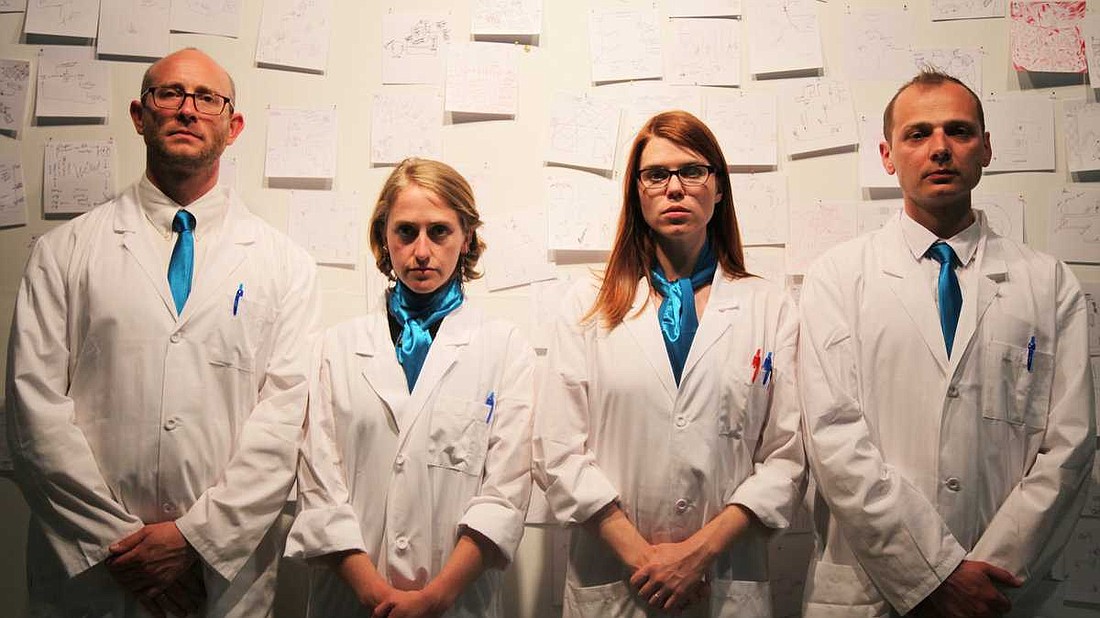- November 23, 2024
-
-
Loading

Loading

The Institute for Psychogeographic Adventure doesn’t create performance art. The Brooklyn-based group prefers to call its work experiments.
If their group’s name didn’t already give it away, these four artists, who greet participants dressed in lab coats for “intake,” aren’t your typical performance group. They’re after a sense of adventure.
The group got its start in Brooklyn, N.Y., as the thesis project of Brooklyn College Master of Fine Arts students Radek Konopka, Liza Wade Green, Emily Rea and Andrew Goldberg. The students were studying performance and interactive media arts, looking for ways to use their theater backgrounds to make something new and engaging.
“We wanted to create something so ridiculous that we could only do it once,” says Goldberg.
Four years later, the group is preparing for “Experiment #42.000,” its sixth experiment, which will join The Ringling’s New Stages series.
Inspired by 1960s French radical collective the Situation International, an avant-garde group of artists and intellectuals dealing in spectacle, IPA flips the performance-art experience on its head, inverting the audience-performer relationship.
Instead of one person watching a play or other work unfold onstage, they asked, what would it be like if there was an audience of one — and dozens of performers putting on a show just for them?
Experiment #42.000 is the culmination of more than a year of canvassing The Ringling’s 66-acre campus and working with more than 60 Sarasota artists, organization leaders and community members to create an artistic adventure to be experienced by one participant at a time.
Here’s how it works: Audience members meet with IPA for a brief intake survey, including such probing questions as “What did you want to be when you grew up?” and “How many hearts have you broken?”
Based on the responses, guests are led, sometimes with one other person, through a series of brief performance encounters lasting about an hour total.
Possible encounters include a roller derby team, a psychic, a spoken word poet, a moonwalking astronaut, a muralist and a washboard player.
Afterward, audience response is measured and documented. You know, for science. The custom encounters range from intimate to spectacular and dreamlike, but they’re all designed to encourage guests to look at their environment in a new way.
“They’re called experiments, and they’re just that,” says Rea. “It asks you to take a setting you’re familiar with and look at it in a new way. You’ve seen The Ringling plenty of times, but how does seeing it in a new context change your perception? It gives you a sense of permission to play.”